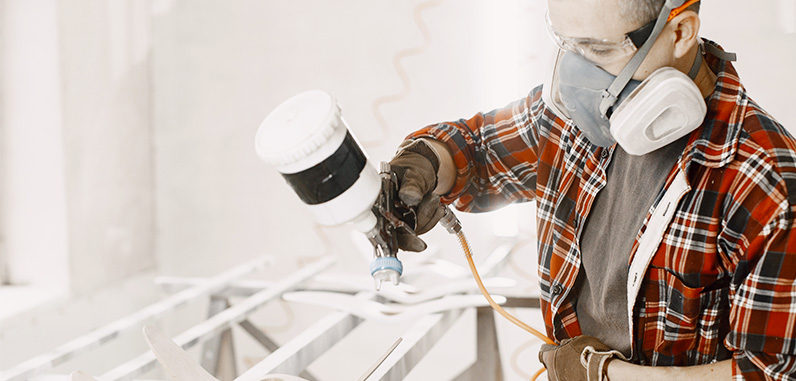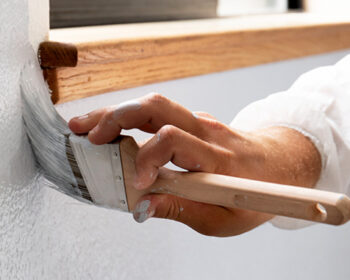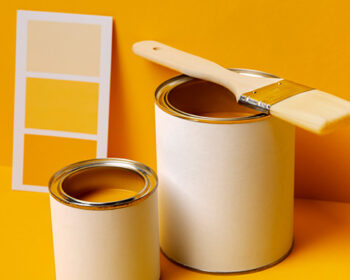
Don’t Risk Your Health: Why Exterior Paint Should Stay Outside
Can outdoor paint be used inside? Indeed, the answer is yes! Nevertheless, just because you can do something doesn’t imply you should, or that what you’re thinking about doing is a smart idea. Although interior and exterior paints may appear the same and, in some cases, even offer the same quality of colour, they are designated for certain places for a reason.
Hence, you must determine which paint is appropriate for interior surfaces before choosing between flat, satin, or semi-gloss. Exterior and interior paints work differently because of their differing formulations. Understanding the fundamental distinctions between the two types of paint and the possible drawbacks of utilising outdoor paint indoors will help you paint your room like a pro house painter.
It is accurate to say that exterior paints contain resins and other catalysts that enable the surface to dry substantially harder so that it can endure elements like wind, rain, heat, snow, and sand abrasion. However, these compounds also cause the paint to emit a significant amount of fumes during the curing process. While these fumes might be OK outdoors where they can dissipate, allowing these paints to cure and dry indoors poses a substantial health risk.
What Distinguishes Interior from Exterior Paint?
Despite having a surface similarity, indoor and outdoor paints have different engineering and produce different outcomes. The binding resins, pigments, and additives used in interior and exterior paints are what distinguish them most from one another.
Interior Paint
Indoor paint is made to endure whatever you and your family can throw at it, but outdoor paint is made to withstand all Mother Nature can throw at it. Interior paints are easily cleanable and can gracefully tolerate the knocks, scratches, and scuffs that come with everyday life thanks to stiff resins.
Furthermore, chemicals that speed up drying and evenly disperse the colour are found in paints made for indoor usage. Also, they are designed to withstand yellowing, fading, and staining.
Exterior Paint
In order to allow them to expand and contract with changes in external temperature, exterior paints are made without stiff binding resins. Exterior paints are made to survive anything from sweltering heat and corrosive sunlight to bitter cold and the moisture brought on by rain, snow, and sleet (within reason, of course).
These paints typically display strong water resistance. They frequently have UV light-blocking compounds (to help them resist fading), and some of them have even been designed with ingredients to fend off mould and mildew. Also, although these ingredients may produce deep exterior paint colours that safeguard your siding and other outside features, they can also be very hazardous; however, we’ll get to that later.
Downsides to Using Exterior Paint Indoors
Toxic Paint Fumes
Exterior paints frequently include more pigment because they are meant to be exposed to the weather. In addition, these pigments tend to contain more volatile organic compounds, or VOCs, which are exceedingly dangerous to your health even if they produce paint with excellent colour saturation and durability.
VOCs are a class of compounds that are frequently included in the building materials, paints, paint strippers, cleaning products, insecticides, and other things we use to construct and maintain our homes.
Exterior paint off-gases or releases VOCs into the air as it dries and cures. Even though the stench will be very intense, that should not be your main concern. The issue here is that VOCs pose a serious threat to your health.
You might not get the most effective outcomes
Because outside paint requires sunlight to cure, using it indoors will most likely feel like, well, waiting for paint to dry. Also, the longer it takes for your paint to cure, the greater the likelihood that it will become scratched and smudged and need touch-ups.
Furthermore keep in mind that exterior paints aren’t made to survive vacuums, kids, or dogs; they’re made to withstand the environment. As a result, stains will be more difficult to remove without harming the finish, and scratches will stand out like sore thumbs.
You’ll probably still be working on the same DIY project in a year or two because outdoor paint does not hold up over time the way interior paint is intended to.
Cleanup may be more difficult than you realise
Acrylic latex is the primary type of interior paint. These aches are designed to be washable and are water-soluble. In contrast, exterior paints are frequently waterproof, which makes them far more challenging to clean up in the event of a spill or splatter.





